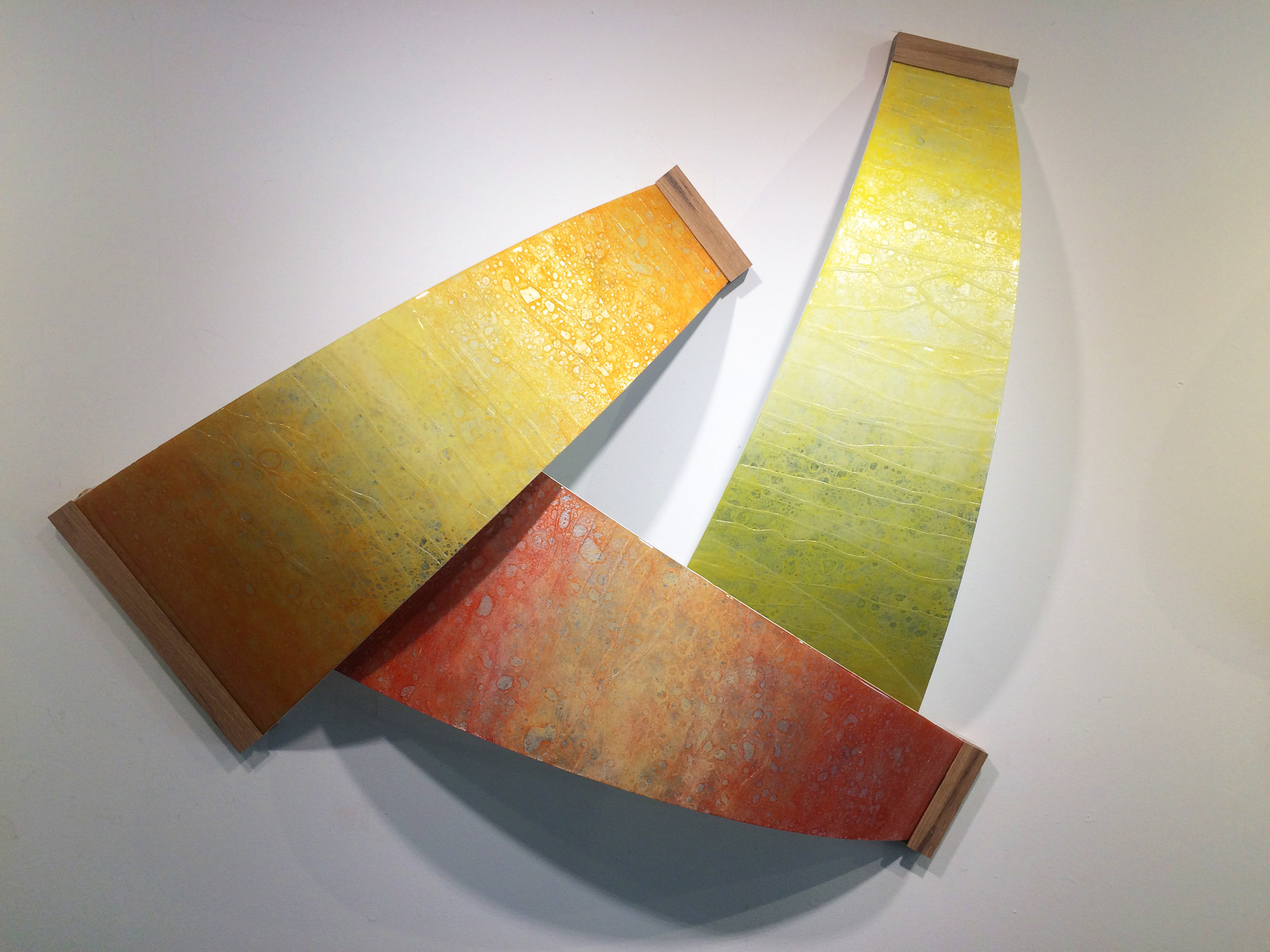I love Asheville and I especially love painting in my studio in Asheville in the summer time. Yes, it’s hot and muggy, but there are so many visitors wondering through the River Arts District — it’s really a fun environment to create artwork in! So many people and so many conversations! Some of the questions I’m asked are hysterical, and some are really deep. Last week, I had a couple visiting with me who asked an interesting question. And as I was answering them it occurred to me I should blog about it. The question was “what has being an artist taught you?” That struck me as a really huge (and very personal) question. I could probably write a whole book on that subject, but for the sake of brevity, I’ll condense my thoughts to five points.
Thinking outside the box is what creativity is all about.
When you learn art techniques in school, you study the “masters” of art history and in a sense, you copy their techniques in order to learn them. In a sense, this places each modern artist in a wonderful place...you are standing on the backs of people like Monet, Renoir, Rembrandt, Da Vinci, and on and on back to the first cave painters. You learn the rules (yes, THERE ARE RULES TO ART). Once you learn the techniques and rules, then (the fun part!) you learn how to remix them into something brand new and unique. This is where rules (some of them) are broken. Learning how and when to break the rules...that takes a life time of playing with art and composition.
2. Mistakes are necessary for growth
My whole technique was developed through many (and on-going) experiments. Some of those experiments work out well. Some of them fail completely. How you respond to a mistake is crucial I think, and I would guess this applies to all of life. If you let them crush and discourage you (and I have let mistakes do that), then that's the end of the story. But if the mistake prompts you to ask questions (like, "why did that happen?", "how did that happen?", "how can I make it do this or that?") then a new experiment takes shape. This is play. This is how play works! Very few mistakes in life are utterly crippling. Most of the mistakes we make can and should prompt serious questions, and as we search for answers...play happens and life goes on.
3. Marketing is really important if you want to be a full-time artist
I wish I could paint all day. I wish I didn't have to take the time to work social media (or write blogs :) but that is not possible. If people do not see the work of an artist, they won't appreciate it, and if they don't appreciate it, they won't purchase it, and if they don't purchase it, you can't be a full-time artist (unless you've won the lottery and can blow through the winnings for the rest of your life). Connecting to people and marketing what you do is really important. How to do that best is a complete mystery to me, but I’m learning. I'm not wired that way, but I know people who ARE and I ask for advice or pay them to for their help.
4. Rest and rejuvenation is crucial for creativity
For me, creativity and moments of epiphany happen when I'm quiet. That's why I walk a lot. Almost every day off, we're hiking -- getting out into nature and breathing in the peace and quiet. Being in nature is like a baby being in it's mother's lap. It's just where we belong. Something almost magical happens sometimes when I'm hiking and enjoying the beauty of creation. The experience creates in me a wonder; it takes me back to being like a child. In that place, my own creativity is excited. I have likened all this (quiet time) as "breathing in" and my own creating as "breathing out". One is necessary if you want the other.
5. People are more important than art.
I work in a public forum. People walk into my studio all day long and ask me what I'm working on and inquire about my technique. It's tempting to wish them all away so I can quietly enter "my creative zone" and paint in undistracted peace. But I'm always reminding myself that the people who come into my studio are infinitely more important than any piece of artwork I create. Artwork only lasts so long. People are eternal (that's my belief anyway). And according to my faith system, people are created in the image of God, so if I love God, I should see him in the face of every single person that enters my studio (and treat them accordingly).
















